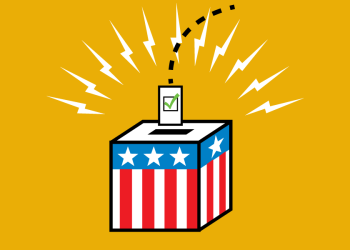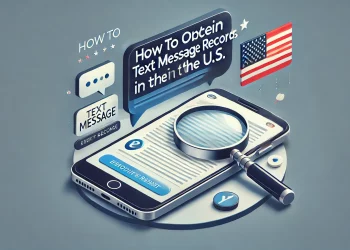We all receive fake text messages or scam messages from companies that we don’t recognize or people we don’t even know. The concept of spam text messages is known as SMS phishing; It’s meant to trick people into giving their personal information to scammers posing as a reputable company or a relative.
Phishing text messages are used by criminals to obtain usernames, passwords, PINs, credit card details, and social security numbers in order to commit identity theft or fraud. Additionally, fake spam text messages are used to trick individuals into downloading malware or viruses by having them click on links that appear to be safe.
Falling for a spam text scam is much more likely than you think. Only in May 2022, 11.94 billion spam texts were sent, or nearly 43 fake texts for every American. The Federal Trade Commission (FTC) also observed a 145% spike in reports of scam texting, despite a decline in fraudulent calls.
In this article, we will talk about how to identify a fake text message, and then we’ll discuss its common examples.
Identifying Fake Spam Text Messages
Despite scammers’ best efforts, fake text messages are easy to spot. Below we have listed the signs that would assist you in identifying spam texts.
Unidentified number:
Fake text messages usually come from unknown cell numbers not on your contact list. They sometimes do not even match your mobile country code.
Short and wordy links:
One of the simplest methods to spot spam text messages is by their frequent use of short, largely nonsensical links. Moreover, some links might be a little wordy and contain typos; for instance, mindsetbook.com could be mentioned as mindsetbook.com.psychestudy.com.
Grammar and spelling errors:
Reputable companies rarely make spelling or grammatical errors when communicating with clients via SMS. Scammers, on the other hand, fall short of this. Watch out for incorrectly written words or sentences.
Punctuation errors:
Spam text messages often contain sentences with the incorrect use of punctuation. Scammers frequently misuse exclamation points, commas, apostrophes, and other punctuation.
Misbranding:
Scammers don’t use the correct branding aspects of the businesses they pretend to represent, mainly when using colors, logos, message tones, and customer service strategies. Such subtle differences can be identified with close attention to detail. Spam text messages have inadequate branding, which is noticeable.
Seem urgent:
Spam messages avoid giving you enough time to assess the message thoroughly because they want you to decide right away before the change of mind.
Missing the mark:
A text message that lacks a clear focal point or that fails to address a vital issue is probably spam.
Fake Spam Text Message Examples
Spam messages use common and repetitive patterns to grab consumers’ attention and trick them into providing information and personal details. Below we have mentioned some examples of common fake text messages. You probably have encountered a few yourself.
Winning Announcements
One of the earliest scams ever devised, this fraudulent SMS activity continues to mislead millions of users worldwide. Today, numerous scammers use this tactic because of how alluring the message can appear. When lottery winners or winners of significant cash awards are announced, many unaware recipients will be excited, and when asked for information to release the payment, they often provide personal information. Even if reputable companies and service providers warn their customers about these fake messages, elderlies and those without a strong technology background can still fall victim to this fraud.
Fake Reimbursements
Some fake spam texts offer a fake reimbursement for a previously used service. The message would also state that sharing certain personal information is required to complete any refund, and at this point, unwary customers would be tricked into revealing their personal data. Companies have repeatedly warned users not to accept or read such messages, but due to the scheme’s alluring financial promise, a highly susceptible victim can be easily tricked.
Billing Statement
Proceed with caution if you suddenly receive messages that your statement is ready or a “thank you for your payment” message. It’s just another prevalent SMS fraud. If you’re unsure about a recent transaction with a brand you think you’ve done business with, go online and check their company site to get their customer care contact information. Never make contact using the details delivered in a fishy text.
Job offers
There is no denying that the standard job search journey is a bootless errand. Whether or not you are looking for work, you should be cautious of unexpected job offers. Such job-related scams con you into calling a number for more information, clicking a link to accept a job offer, or paying a certain sum to get a job. No matter how intriguing the pay is, it is all a hoax. A legit recruiter would contact you through the provided details in your job application.
Package Delivery
Due to the rise in online shopping practices, scammers now send out spam messages about deliveries and packages of things we never ordered. Beware of such fake messages. When shippers text customers with valid shipping updates, they never request money or personal information in order to complete a delivery.
Two-factor authentication
Two-factor authentication helps increase the security of accounts. It sends you a code by SMS to allow access to your account. It makes it hard to access your account, even if scammers have your email credentials. However, they don’t give up; their next move is to send you a fake spam text to obtain the code. They create text messages to appear as though legitimate authorities issued them.
Then they inform you that your account is being attacked and that you must send your two-factor authentication code again to recover it. This lets scammers access your account, which could be difficult to recover later.
Personal requests
Personal inquiries are another type of fraudulent spam text activity. Such messages typically have a humble and sympathetic tone from the reader. Unaware readers who read these messages sympathize with the sender’s situation and agree to donate money to them. Once a significant amount of money is transferred, the scammer would disappear and be impossible to find.
Government Agency
Such fake spam text activities use intimidation by pretending to be a government organization. They pretend to be government entities and threaten to take action over alleged wrongdoing or transaction by threatening legal action or jail time unless a specific sum is transferred as penalty dues. Governmental organizations don’t contact citizens through phone, text, or email. Any authorized government organization will contact you through mail or certified letter if needed.
Assist a family member.
It’s a common spam text practice that people find hard to avoid since tricksters use victims’ vulnerabilities as bait. They can acquire details about a relative through your social media profiles and then use that information to pass themselves off as a relative.
They know that requests for assistance from family members will presumably provoke spontaneous responses. They manipulate this way to make a person believe that a relative is in danger and requires money to handle the crisis.
CONCLUSION
In the past decade, fake spam texts have grown significantly. Scammers use fraudulent claims and intimidation techniques to prey on unwary and gullible users. Therefore, it’s necessary for everyone to identify fake spam text messages and warn others—especially the elderly—about the dangers of interacting with such messages. Avoid responding to any encounters. The fraudster might try to make their fake spam texts even more challenging to identify the next time if they realize they’ve reached you successfully.














